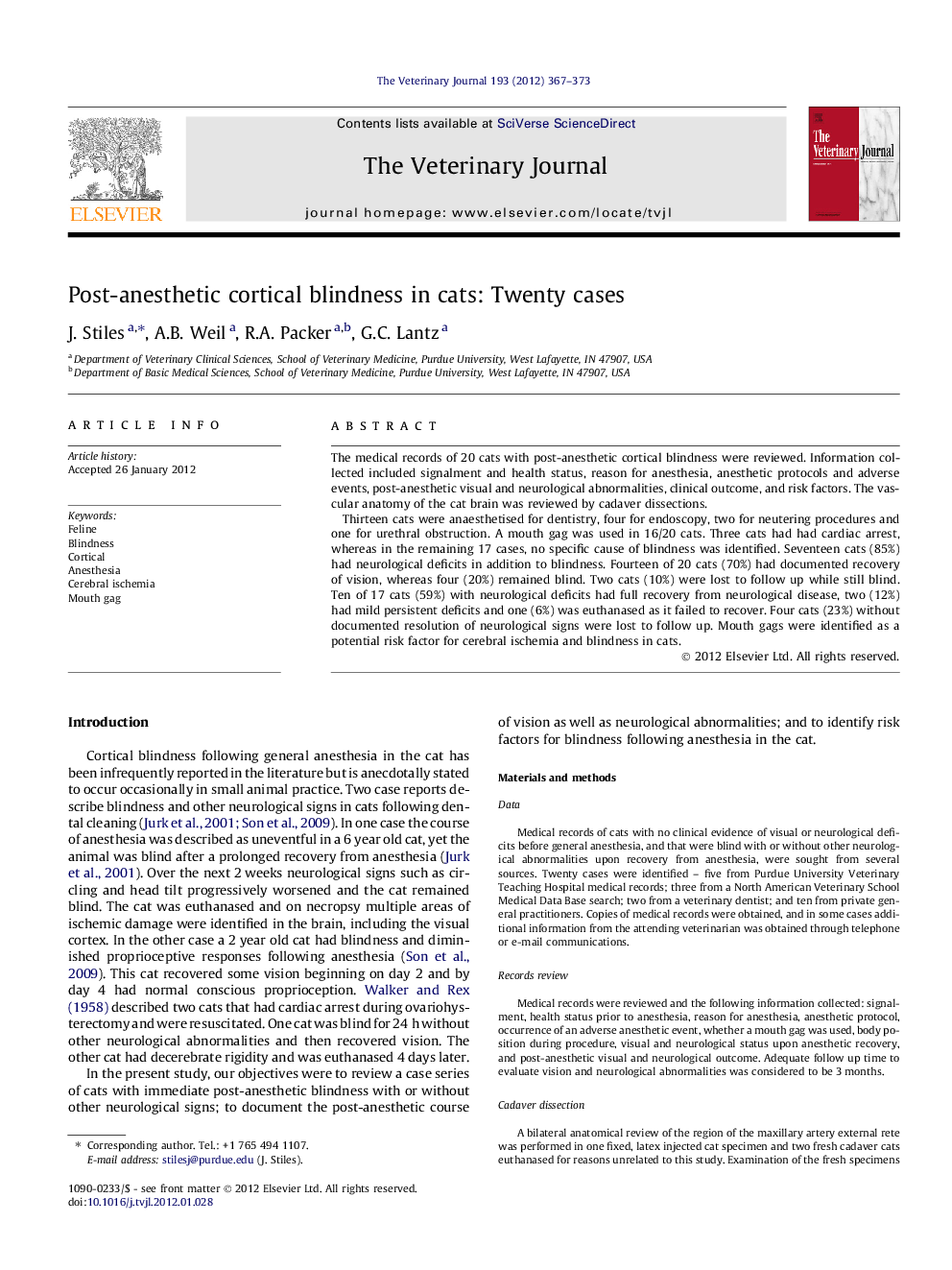| Article ID | Journal | Published Year | Pages | File Type |
|---|---|---|---|---|
| 5799286 | The Veterinary Journal | 2012 | 7 Pages |
The medical records of 20 cats with post-anesthetic cortical blindness were reviewed. Information collected included signalment and health status, reason for anesthesia, anesthetic protocols and adverse events, post-anesthetic visual and neurological abnormalities, clinical outcome, and risk factors. The vascular anatomy of the cat brain was reviewed by cadaver dissections.Thirteen cats were anaesthetised for dentistry, four for endoscopy, two for neutering procedures and one for urethral obstruction. A mouth gag was used in 16/20 cats. Three cats had had cardiac arrest, whereas in the remaining 17 cases, no specific cause of blindness was identified. Seventeen cats (85%) had neurological deficits in addition to blindness. Fourteen of 20 cats (70%) had documented recovery of vision, whereas four (20%) remained blind. Two cats (10%) were lost to follow up while still blind. Ten of 17 cats (59%) with neurological deficits had full recovery from neurological disease, two (12%) had mild persistent deficits and one (6%) was euthanased as it failed to recover. Four cats (23%) without documented resolution of neurological signs were lost to follow up. Mouth gags were identified as a potential risk factor for cerebral ischemia and blindness in cats.
